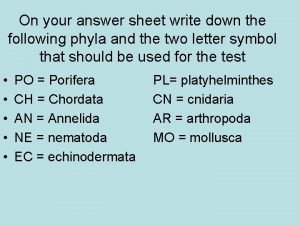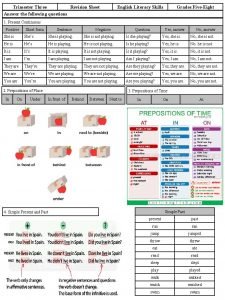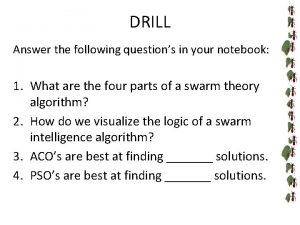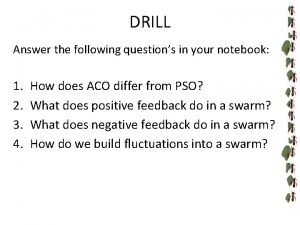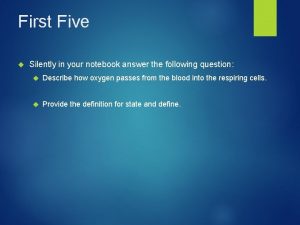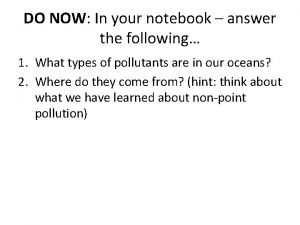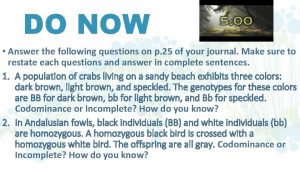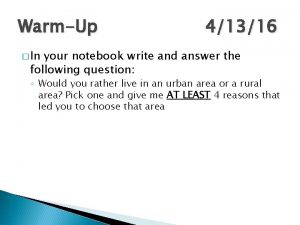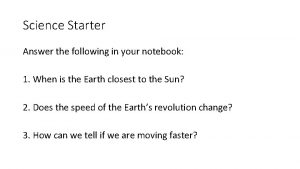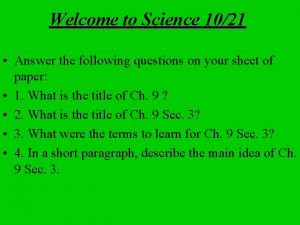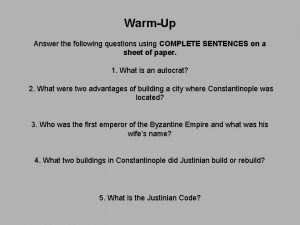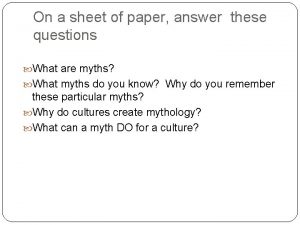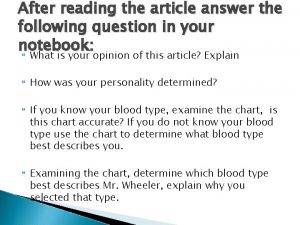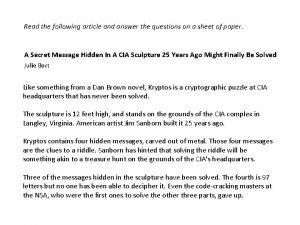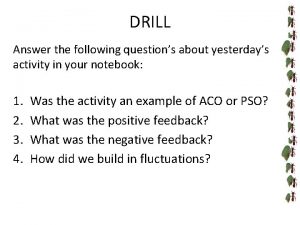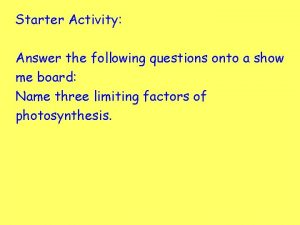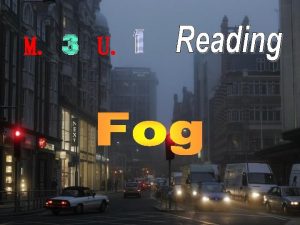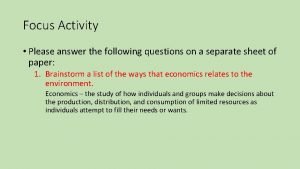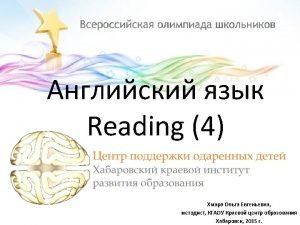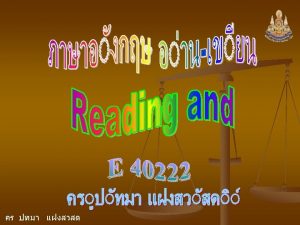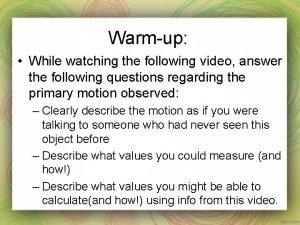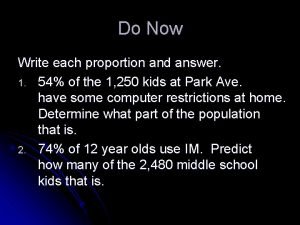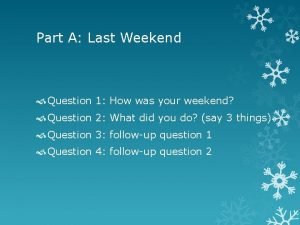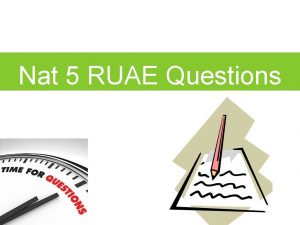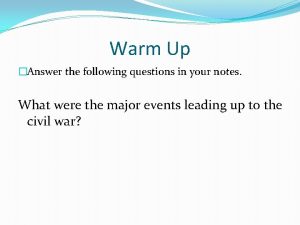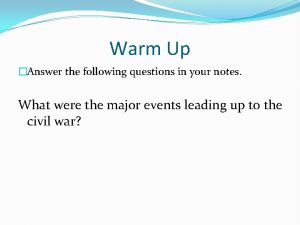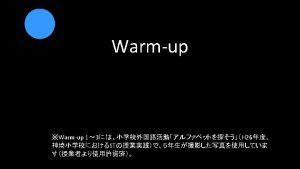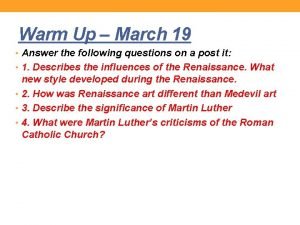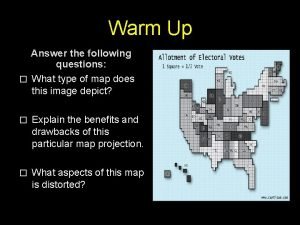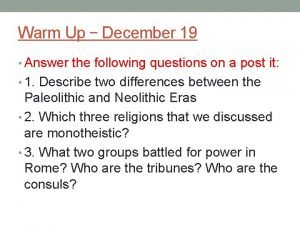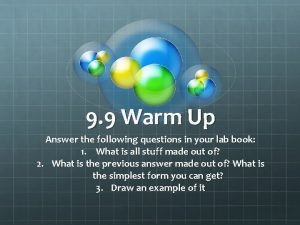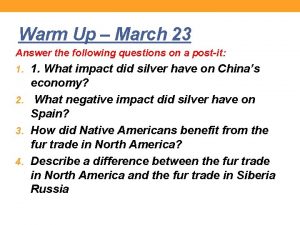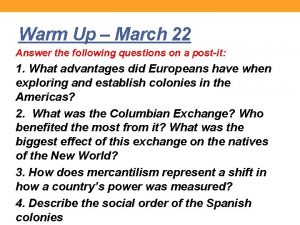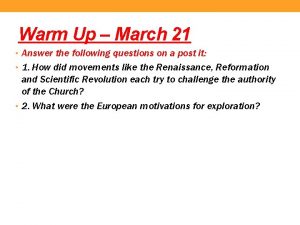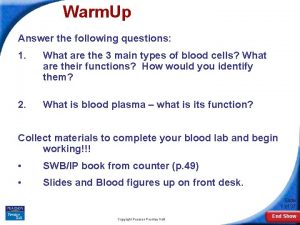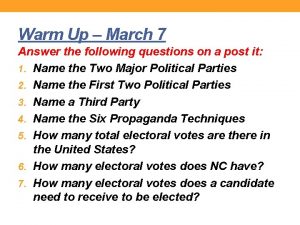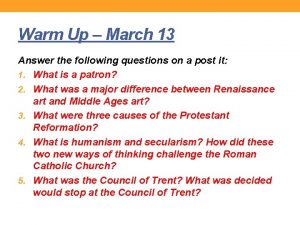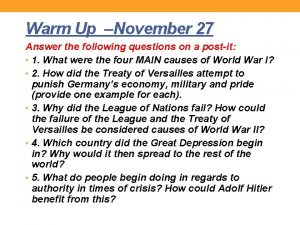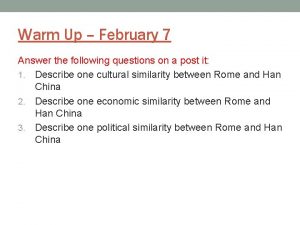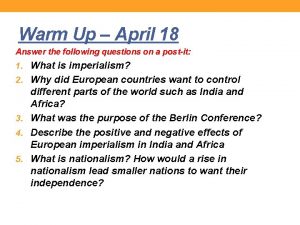Warm Up Answer the following questions in your





















































- Slides: 53

Warm Up Answer the following questions in your notebook. 1. What do you think this object may be? 2. What might this object be used for? 3. Who do you think may have used this object? Don’t be afraid to be incorrect!

• This object is called an armillary sphere. • The armillary sphere was used by the Ancient Greeks, the Ancient Chinese, the Medieval Europeans, and Medieval Middle Easterners. • This device was a model of objects in the sky and was used to study astronomical occurrences.

The Earth in the Universe

Hierarchy of the Universe • Describes the order of the universe in relation to the size of the subject (Galaxy, planet, moon…) • The universe is made up of many galaxies. • Galaxies are made up of many stars. • Many stars have planetary systems similar to our solar system. • Earth is a satellite planet of one particular star…. our Sun.

• The Universe • Galaxies • Stars • Planetary Systems • Planets • Moons (Largest) (Smallest)

Our Cosmic Address tells us where we are in the Universe • • Planet Earth The Earth-Moon System The Solar System The Milky Way Galaxy The Local Group Virgo Supercluster The Observable Universe (Smallest) (Largest)

Where in the Milky Way Galaxy is our solar system located? • The central bulge is at middle of the galaxy. • Spiral arms extend from the central bulge. They are made of stars, gas and dust. • The Earth is located in one of the spiral arms.

Where is the Earth located in our Solar System? • Earth is the 3 rd planet from the Sun in our solar system.

Motion and the Universe- EEn. 1. 1. 1. • Everything in the Universe is constantly in motion. • This includes: – Galaxies – Stars – Planetary Systems – Planets – Moons

The Big Bang Theory and the Expansion of the Universe • The Big Bang Theory is the most accepted scientific explanation for the beginning of the universe. • It explains that the universe began as a single point and has been expanding ever since.

The Expanding Universe • Space is indeed constantly expanding, which makes the galaxies seem to be moving away from each other. • However, the galaxies are not actually moving away from each other, it is simply the space between them growing at a uniform rate. http: //www. universeadventure. org/big_bang/expand -galaxy. htm

So, how do galaxies move? • The stars, planetary systems, gasses, and dust that make up a galaxy all revolve around the galaxy’s central bulge. • Our entire solar system orbits the center of the Milky Way Galaxy at an average speed of 828, 000 km/hr. • Despite this high speed it still takes our Solar System 230 million years to make an entire trip around the galaxy! • http: //starchild. gsfc. nasa. gov/docs/Star. Chil d/questions/question 18. html

How do planets and moons move? • Within a planetary system, the planets revolve around the central star. • In our planetary system, which we call the “solar system”, we refer to our central star as “the sun”. • In the solar system, all planets revolve around the sun, and moons revolve around their respective planets.

Today’s Warm up • Please define the following vocabulary terms: – Axis – Rotation – Revolution – Orbit – Eccentricity.

Planetary Orbits and Kepler’s Laws

Structure of the Solar System • In human history, there have been two main models of our solar system. These are… • The Geocentric Model and • The Heliocentric Model

Geocentric Model • The Geocentric Model places the Earth at the center of the universe with the Sun, Moon, and planets revolving around the Earth. • The ancient Greeks, Romans, and all of Medieval Europe accepted this model. In Europe, it was widely accepted until the 1600 s after it was challenged by Copernicus, Galileo, Kepler, and Bruno.

Heliocentric Model • The Heliocentric Model recognizes that the Sun is at the center of the Solar System with the planets revolving around it. • The ancient Egyptians understood and accepted this model, but it was not accepted in Europe and most other parts of the world until during and after the 1600 s. https: //www. youtube. com/watch? v=z 8 a. BZZnv 6 y 8

Retrograde Motion • So, how did ancient Egyptian astronomers, and later astronomers, come to accept the heliocentric model without the advantage of modern astronomy technology? • They watched the planets as they traveled from east to west across the sky over a period of many nights. They noticed that at times planets would appear to temporarily change direction. • This phenomenon is called retrograde motion. • By carefully observing retrograde motion, and thinking deeply about its cause, astronomers were able to recognize that the planets were indeed orbiting the Sun. https: //www. youtube. com/watch? v=lltk. Adu. GVSg

Kepler and the Laws of Planetary Motion • Johannes Kepler was a German mathematician, astronomer and astrologer. • He was a key figure in the 17 th century scientific revolution. • Kepler knew of 6 planets: Earth, Venus, Mercury, Mars, Jupiter and Saturn. • Kepler’s Laws describe the motion of the planets around the sun.

Kepler’s First Law • States that planets move around the sun in ellipses (oval shapes), with the sun at one of two foci. *Note: “foci” is plural for “focus”. • What does this really mean? – This means that the distance between the planet and the sun varies, as the planet goes around.

Kepler’s Second Law of Planetary Motion Each planet moves around the Sun so that an imaginary line joining the planet and the Sun will sweep over equal areas in time.

This means that the planets travel at different speeds at different positions in the orbit. Perihelion (a) The planet’s position in it’s orbit where it is closest to the Sun. (b) The speed is fastest at perihelion Aphelion (a) The planet’s position in it’s orbit where it is farthest from the Sun. (b) The speed is slowest at aphelion

Earth’s Orbit

Kepler’s Third Law of Planetary Motion The farther a planet is from the Sun, the longer it takes for it to make one complete revolution.


Barycenter • A barycenter is the point between two objects where they balance each other. • Its kind of like the center of gravity. (Think about a seesaw) • The center of gravity is the point in the middle of all the material that makes up an object’s, or multiple objects’, mass.

Center Point of Gravity and Barycenter • When a moon orbits a planet, or a planet orbits a star, both bodies are orbiting around a point that lies just inside or outside the larger body. • The moon does not orbit the exact center of the Earth, but a point about 1710 km below the Earth’s surface. • The sun is not stationary in the solar system. It moves as the planets tug on it, but it never gets too far from the solar system barycenter.

Modeling Barycenter – http: //spaceplace. nasa. gov/barycenter/

Warm Up • Describe the different parts of this picture. Describe what is in this picture. • What do you think this is and what do you think it is used for? • In what year do you think this was created?

This is called Foucault's Pendulum and it is used as an experimental way to physically show earth is rotating. It was created 1848. https: //www. youtube. com/watch? v=b 14 l 3 -A 8 i. UQ

The Difference Between Revolution and Rotation • Revolution is when an object travels around another object. • Rotation is when an object spins. • This is a very important difference!

Earth’s Rotation • One complete rotation of the Earth takes 24 hours. This is called a day. • The Earth rotates from west to east (Counter clockwise). This causes the Sun to appear to rise in the east and set in the west. • Earth’s rotation is the cause for day and night. https: //www. youtube. com/watch? v=R 3 jr 0 Da. V 8 N 8

Earth’s Axis • The Earth spins on an axis. • The axis is an imaginary line that runs through the center of the Earth from the north pole to the south pole. • In relation to this imaginary line, the Earth is “tilted” by 23. 5 degrees.

Is the Earth Round? • Technically, Earth is an oblate spheroid. • It is wider at the equator than at the poles. • This is caused by the rotation of the Earth on its axis.

Earth’s Rotation and Its Shape… http: //www. cleonis. nl/physics/phys 256/equatorial_bulge. php

What happens when the direction of the axis changes? • The ongoing change in the direction of the Earth’s axis is called precession. • In this cycle, Earth’s axis wobbles, but the angle is not affected. • Precession is caused by a gravitational pull from the moon. • The circle that is traced out by the axis is known as the precessional axis.

Precession • One complete cycle of precession takes 26, 000 years! • Roughly 12, 000 years from now, December will be summertime and June will be winter here in the Northern Hemisphere!

Precession… • Precession also causes Earth’s north star to change. • Our current north star is Polaris, but in about 12, 000 years our north star will be Vega. http: //www. sciencecourseware. org/eec/Globa l. Warming/Tutorials/Milankovitch/

Nutation • Nutation occurs about the precessional axis and looks like a wobble. • Nutation is a change in the tilt of Earth’s axis by ½ degree one way or the other. This causes the tilt to move back and forth from 23 degrees and 24 degrees. • This occurs over an 18 year period. • This is due to gravitational forces of the Moon, the Sun, and other planets. • This causes seasons to be more or less extreme.


Nutation

Warm Up In class, we acknowledged that Eccentricity, Perihelion, and Aphelion are not responsible for the changing of seasons on Earth. In 3 - 5 complete sentences, speculate on the cause of the seasons. If you already know what causes the seasons, explain it in your paragraph. If you do not know, write your paragraph on your best guess, and do not be afraid of being incorrect! Also, feel free to include an illustration if you need to!

The Sun and the Seasons

Sun and Seasons • The Earth’s movement around the Sun is called a revolution. • The Earth’s revolution and its tilted axis are what cause the changing of the seasons. http: //www. brainpop. com/science/ weather/seasons/

Differentiated Heating by the Sun • As the Earth moves around the Sun, different parts of the Earth get different amounts of solar radiation (heat). • The more direct an angle of sunlight is, the warmer that sunlight will be on the Earth. • The subsolar point is the area on the Earth where the most direct sun rays are hitting. https: //www. youtube. com/watch? v= Pgq 0 LTh. W 7 QA http: //astro. unl. edu/naap/motion 1/anim ations/seasons_ecliptic. html

Subsolar Point • As the Earth revolves around the Sun, the subsolar point constantly travels between the tropics. • R • Roughly 23 degrees North latitude • Roughly 23 degrees • South latitude http: //astro. u nl. edu/naap/ motion 1/ani mations/seas ons_ecliptic. h tml

Solstices and Equinoxes • Each year the Earth experiences two solstices and two equinoxes. • A solstice occurs when the subsolar point is on one of the tropics. • An equinox occurs when the subsolar point is on the equator. Each hemisphere (North and South) has its own Vernal Equinox, Summer Solstice, Autumnal Equinox, and Winter Solstice. http: //www. brainpop. com/science/earthsyste m/solsticeandequinox/activity/ http: //astro. unl. edu/naap/motion 1/animations/seasons_ecliptic. html

Vernal Equinox • The Vernal Equinox is also known as (AKA) the “Spring Equinox”. • In the Northern Hemisphere, it occurs around March 21 st each year. • In the Southern Hemisphere, it occurs around September 23 rd each year. • At the Equinoxes, the length of day and night is an almost equal 12 hours each. • During both hemispheres’ Vernal Equinox, the subsolar point is on the equator.

Autumnal Equinox • The Autumnal Equinox is also known as (AKA) the “Fall Equinox”. • In the Northern Hemisphere, it occurs around September 23 rd each year. • In the Southern Hemisphere, it occurs around March 21 st each year. • At the Equinoxes, the length of day and night is an almost equal 12 hours each. • During both hemispheres’ Autumnal Equinox, the subsolar point is on the equator.

Summer Solstice • In the Northern Hemisphere, it occurs around June 21 st each year. • In the Southern Hemisphere, it occurs around December 22 nd each year. • At the Summer Solstices, the length of the day is at its longest. • During the Northern Hemisphere’s Summer Solstice, the subsolar point is on the Tropic of Cancer. • During the Southern Hemisphere’s Summer Solstice, the subsolar point is on the Tropic of Capricorn.

Winter Solstice • In the Northern Hemisphere, it occurs around December 22 nd each year. • In the Southern Hemisphere, it occurs around June 21 st each year. • At the Winter Solstices, the length of the day is at its shortest. • During the Northern Hemisphere’s Winter Solstice, the subsolar point is on the Tropic of Capricorn. • During the Southern Hemisphere’s Winter Solstice, the subsolar point is on the Tropic of Cancer.

 Name the organism
Name the organism In your answer sheet answer the following questions
In your answer sheet answer the following questions Answer the question in your notebook
Answer the question in your notebook Answer the question in your notebook
Answer the question in your notebook Answer the following question in your notebook
Answer the following question in your notebook In your notebook answer the given question
In your notebook answer the given question In your notebook answer the following
In your notebook answer the following In your notebook answer the following questions
In your notebook answer the following questions Now answer the following questions in your notebook
Now answer the following questions in your notebook Now answer the
Now answer the Las estaciones answer these questions
Las estaciones answer these questions Answer the questions write in your notebook
Answer the questions write in your notebook Work in pairs answer the following questions
Work in pairs answer the following questions Answer the questions in your notebook
Answer the questions in your notebook Take a look the following pictures and answer
Take a look the following pictures and answer Answer the following in your notebook
Answer the following in your notebook In your notebook,define the following
In your notebook,define the following Answer the following questions science
Answer the following questions science 1 answer the following questions using complete sentences
1 answer the following questions using complete sentences Use the graph below to answer the following questions.
Use the graph below to answer the following questions. Answer the following questions on a sheet of paper
Answer the following questions on a sheet of paper Use the photos to answer the questions
Use the photos to answer the questions 24 in pairs answer the questions
24 in pairs answer the questions After reading answer the following questions
After reading answer the following questions After reading the article answer the following question
After reading the article answer the following question Look ask and answer
Look ask and answer Activity answer the following questions
Activity answer the following questions Watch the video and answer the question
Watch the video and answer the question Task 1 answer the following questions
Task 1 answer the following questions Activity answer the following questions
Activity answer the following questions Mu look
Mu look Please answer the following questions
Please answer the following questions Answer these questions using complete sentences.
Answer these questions using complete sentences. Task 2 read the text and answer the questions
Task 2 read the text and answer the questions Answer the questions orally
Answer the questions orally Answer the following questions using complete sentences
Answer the following questions using complete sentences Answer the following questions
Answer the following questions Task 2 answer the following questions briefly
Task 2 answer the following questions briefly Exercise answer the following questions
Exercise answer the following questions Read the text to answer the questions
Read the text to answer the questions Look at the picture and answer the questions
Look at the picture and answer the questions Angular acceleration symbol
Angular acceleration symbol Answer the following questions
Answer the following questions Conjunstions
Conjunstions Now answer the questions
Now answer the questions Discuss these questions with a partner
Discuss these questions with a partner Discuss these questions with a partner.
Discuss these questions with a partner. Each proportion write your answer in your notebook
Each proportion write your answer in your notebook Unit 2 saq
Unit 2 saq Give us your hungry your tired your poor
Give us your hungry your tired your poor Describe your favourite tv show
Describe your favourite tv show What did you do over the weekend ?
What did you do over the weekend ? Questions about weekends
Questions about weekends Own words questions national 5
Own words questions national 5
